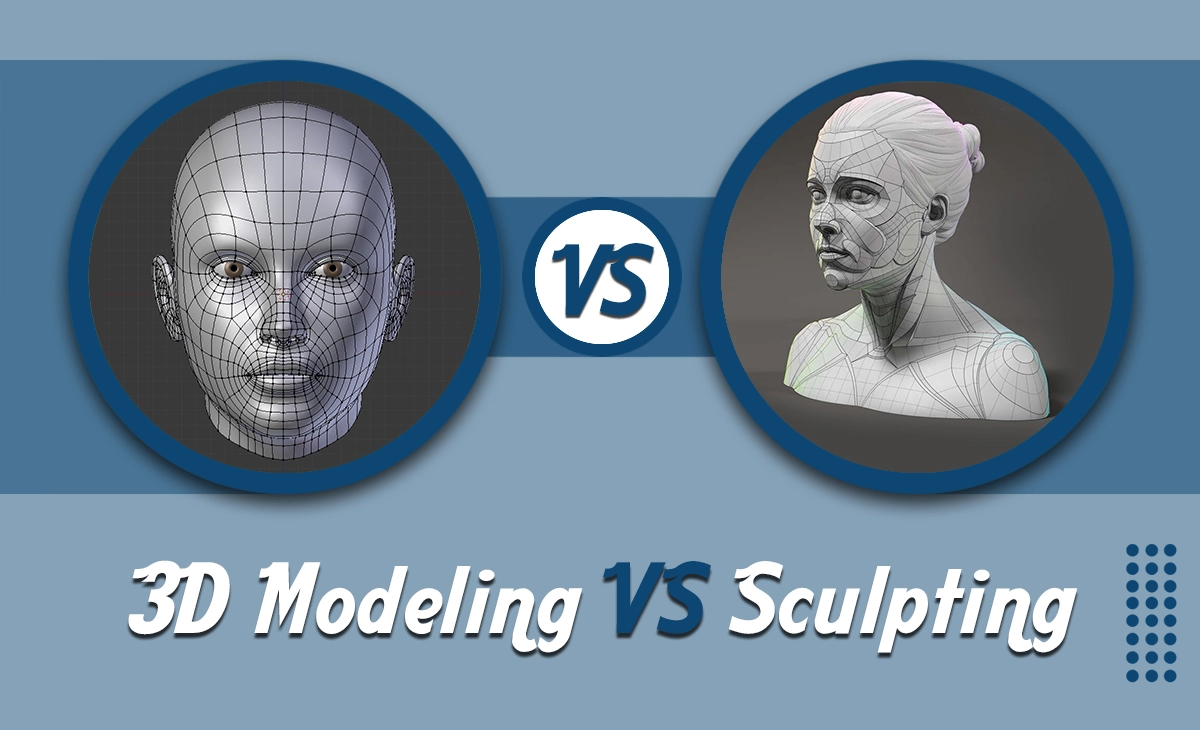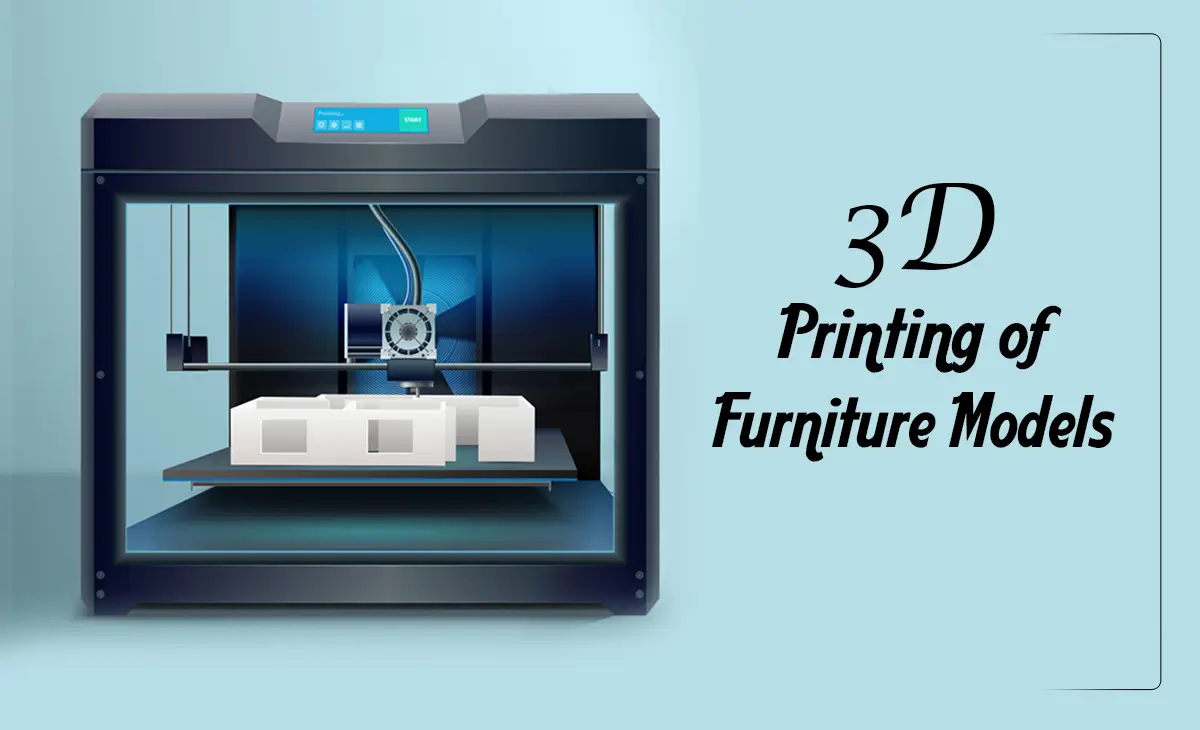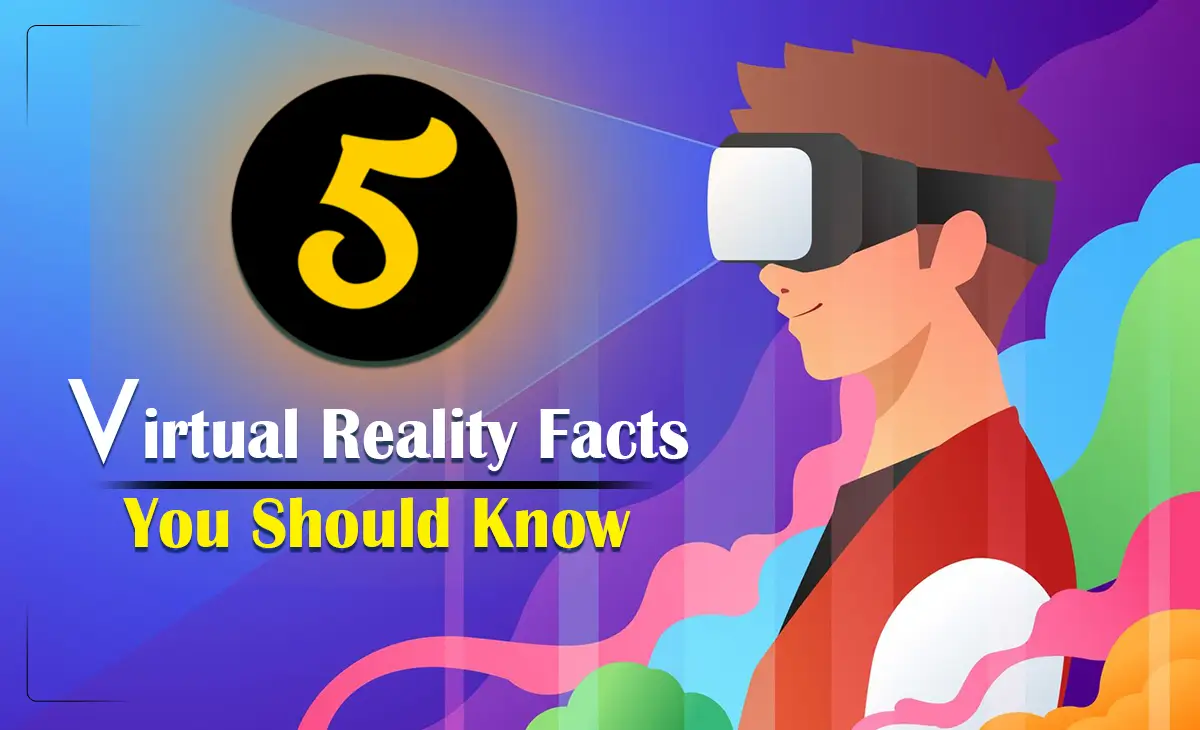3D modeling vs Sculpting
3D modeling and sculpting are used in computer graphics and digital art to create three-dimensional objects, characters, environments, and more. Artists most often use a combination of both of them or separately according to the needs of the project. You might be confused between both of them to understand. There are some differences in 3D modeling vs sculpting. Let’s dive in to better understand.
3D Modeling
3D modeling is the process of creating three-dimensional objects with the help of CAD (computer-aided) software. The process is done mathematically in a virtual space. Face, Edges, and Vertices are used to form a 3D model. Different types of 3D modeling are available some of them are primitive modeling, polygonal modeling, Rational B-spline modeling, etc.
Sculpting
3D sculpture, in the context of computer graphics and digital art, refers to the creation of three-dimensional objects or characters using digital sculpting techniques. It enables artists to manipulate virtual clay, allowing them to add or subtract material to craft intricate details, folds, and textures. 3D sculpting represents a more artistic and intuitive method for developing 3D assets.
The difference between 3D modeling vs Sculpting
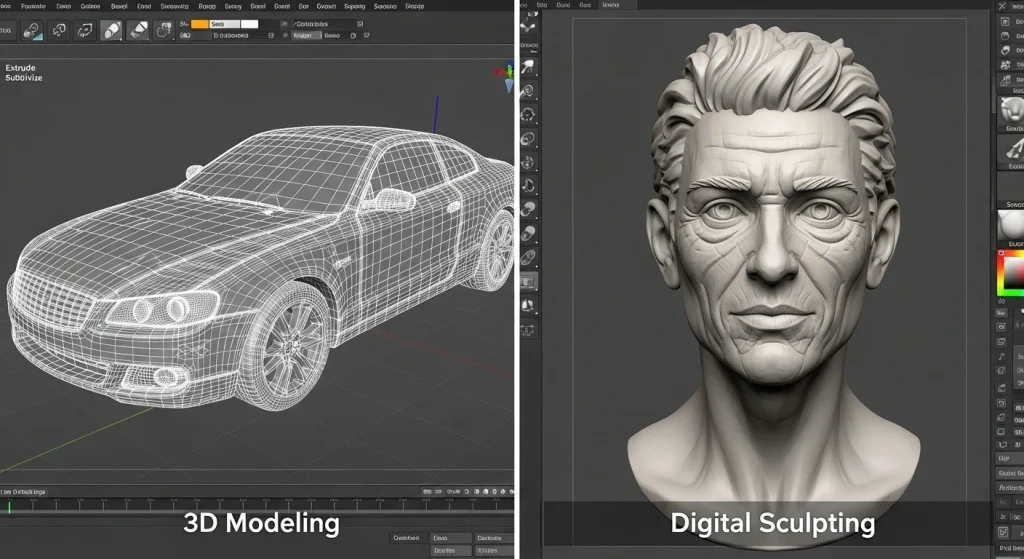
Creating Model
In Digital sculpting organic shapes like characters, animals, trees, mountains, and various real-life objects, provide an easier and more accurate means of representation. In contrast, 3D modeling faces challenges when attempting to replicate these complex forms. On the other hand, 3D modeling software proves highly effective in rendering hard surfaces, such as furniture, weapons, vehicles, buildings, and electronic gadgets. Its precision and control make it a preferred choice for the intricate detailing required in creating these structured and manufactured elements.
Another difference between 3D modeling vs sculpting is the requirement of skills and experts to create models. Geometrical knowledge such as vertices, faces, edges, and also software and calculative skills are required to create 3d models. On the other hand for sculpting a model, you need more precise knowledge of technical proficiency, artistic skills, software, and anatomy skills.
Software
SolidWorks, Blender, 3ds max, and Maya are used for creating 3d models. Several software applications are popular for 3D sculpting like ZBrush, Mudbox, or Blender’s sculpting features.
3D modeling is a straightforward process
The difference between 3D modeling vs sculpting lies in its processing. Creating 3D modeling is easier than sculpting. If a sculpted model is created once, it is difficult to modify the model. But you can modify the 3D model at any time manipulating edges, vertices, and all.
Uses of polygonal mesh in 3d modeling and sculpting
The unique aspect of 3D sculpting lies in its control over the entire mesh area. In contrast, 3D modeling provides the artist the ability to work with individual polygons, vertices, or edges during the model creation process. Here, the formation of 3D models involves a meticulous, step-by-step construction of polygons, unlike the simultaneous, holistic manipulations seen in 3D sculpting.
Polycount in 3D modeling vs 3d sculpting
The increased demand for a significantly higher number of polygons is a key factor contributing to the exceptionally smooth and detailed nature of 3D sculptures. In the realm of VFX for animated movies, characters necessitate billions of polygons to capture every intricate detail.
This is in stark contrast to 3D modeling, where the creation of digital representations involves polygon meshes with comparatively lower poly counts. While high-polygon modeling is present in 3D modeling, even in its high form, it falls short of the polycount requirements typical in the more detailed and sculptural approach of 3D sculpting.
The sector where used in 3D modeling and sculpting
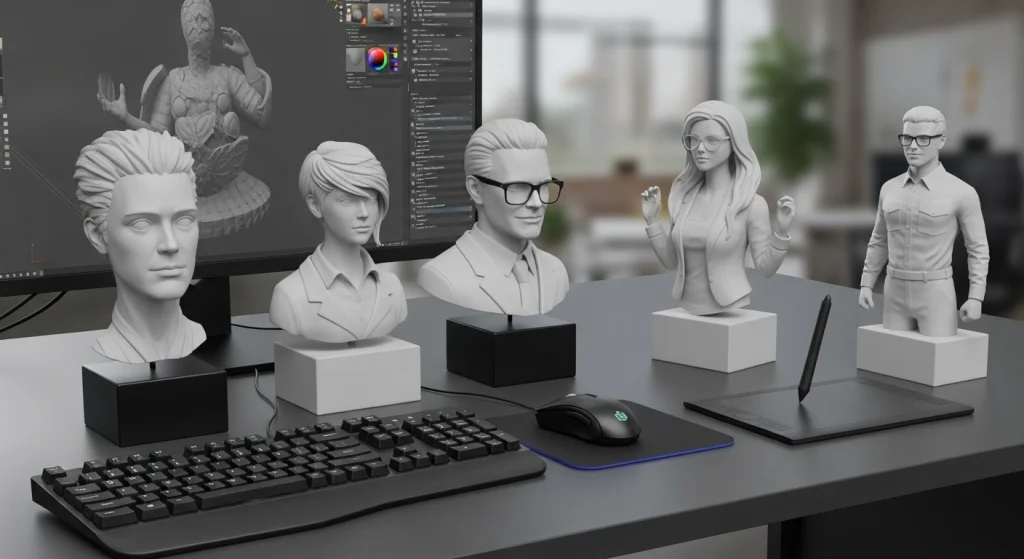
There are many sectors where used in 3d modeling such as architecture modeling, AR/VR modeling, 3D car modeling, 3D interior modeling, 3D product modeling, etc.
3D architecture modeling
3D architecture modeling is most useful for architects. This process is crucial in the field of architecture for various purposes, including design visualization, analysis, and communication.
3D AR/VR modeling
3D modeling for AR (augmented reality) and VR (virtual reality) gives an immersive digital experience to its users to connect with the three-dimensional environments. 3D AR/VR modeling is used in many areas such as military, aviation, education, etc.
On the other hand, 3d sculpting generally known as digital sculpting is mainly used for Refining and enhancing a digital object involving employing various digital tools to smooth surfaces, clean imperfections, and manipulate its form by pushing and pulling, ultimately transforming it into a polished computer-generated (CG) entity. It is also used in Film, animation, character designing, texture mapping, etc.
Pros and cons of 3D modeling and sculpting

Every application has some positive and difficult side. 3D modeling and sculpting has also some positive and negative sides.
Pros of 3D modeling
Visualization and Design Communication: 3D modeling enables graphic visual representations of concepts, designs, and structures.
Accurate Prototyping: Allows for the creation of accurate and detailed prototypes before physical construction, reducing errors and costs associated with design changes.
Realistic Rendering: Advanced rendering capabilities produce high-quality and realistic images, aiding in presentations, marketing materials, and client pitches.
Cons of 3D modeling
Learning Curve: Understanding 3D modeling software can be challenging, requiring a significant learning curve for beginners.
Resource Intensive: Rendering and using complex 3D models can require significant computing resources, potentially leading to slow performance on less powerful hardware.
Time-Consuming: Creating detailed and realistic 3D models can be time-consuming, particularly when aiming for high levels of precision and accuracy.
High Software Costs: Professional-grade 3D modeling software can be expensive, potentially posing a financial barrier for individuals or smaller businesses.
Pros of sculpting
Accurate precision: Digital sculpting allows precise control over the design of character modeling.
High-resolution output: It allows the creation of high-resolution models for various applications.
Animation and Rigging: 3D sculpting is closely tied to animation and rigging processes. Artists can create characters or objects with detailed 3D models that can be animated for use in films, games, and other interactive media.
Cons of Sculpting
Complicated Process: Creating a digital sculpting model is a very complicated process.
Initial Cost: Acquiring professional-grade digital sculpting software and hardware can be expensive, especially for high-end tools and equipment.
Hardware Requirements: High-quality digital sculpting often requires powerful hardware, which may not be accessible to everyone due to cost constraints.
Edit: Making significant alterations to sculpted models can be difficult and might necessitate starting the sculpting process anew, posing challenges in terms of flexibility for edits.
Conclusion
Ultimately, the choice between 3D modeling vs sculpting hinges on the specific needs of the project, the preferences and skill set of the artist, and the desired outcome. Some projects may benefit from the precision and efficiency of 3D modeling, while others may find the benefits from the intuitive nature of sculpting more fitting. In many cases, artists and designers may find value in combining both approaches to leverage their respective strengths and create well-rounded, dynamic results.


